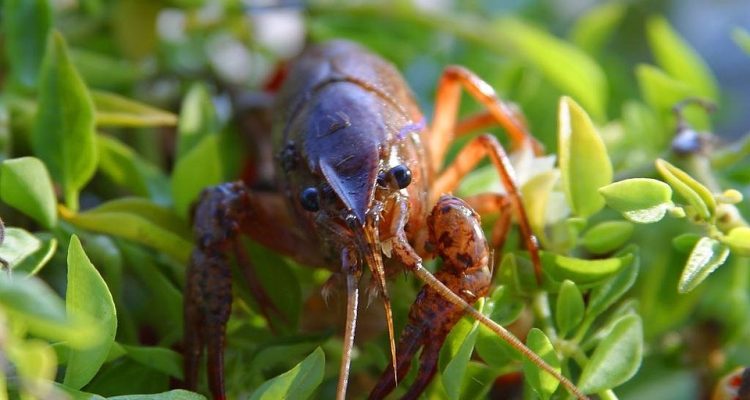Summer can be a busy time for faculty as they dig into research and dig in is exactly what Dr. Zachary Loughman is known for.
Selected as West Virginia’s 2014 Professor of the Year by the Faculty Merit Foundation, Loughman is well known for his crayfish research. This past spring Loughman and his crayfish colleagues had two articles published describing four new species in the past three months. In fact, Loughman is one of the nation’s leading authorities on the crustaceans. He also is an associate professor of biology/zoology/ecology at WLU.

From left, Dr. Loughman is shown with a few of his students, Zachary Dilliard, Katie Scott, Luke Sadecky and Nicole Sadecky, as they head into the field.
Since the amazing levels of freshwater biodiversity found in the Appalachian Mountains of the eastern United States are among the highest recorded globally, this is where he searched, specifically in the Kentucky and Licking River basins in eastern Kentucky.
These summer trips began in spring of 2012 when he was working on finishing up a species description and I went to Kentucky, to figure out how far west the new species went.
“I took my son, Colin, along with me and two former WLU students, Kinsey Scalikan and David Foltz. We were trying to delimit the western part of what would be the Coal Fields Crayfishes range. Colin was right there when I captured what would turn out to be another undescribed species for the first time” he said. ‘This was the first time I knew without question, while still in the field, that I had found an undescribed species.”
“In my career, I’ve had a handful of times like that. A Eureka moment. It was exciting and my students and I then began tracking down this new species distribution”
“In the summer of 2014, I took my SURE (Summer Undergraduate Research Experience) students back to the coalfields of Eastern Kentucky to really figure out what encompassed this new species range, and I knew right away that what we captured the year before was special. The students and I collected crayfish from across the Upper Kentucky River’s forks, at the same time we were investigating the impact of land use practices on crayfish. With more specimens in hand, we realized there was a lot of variation in the new crayfish we were after. This new species seemed like more than one kind. So from 2014 through 2016, I spent time trying to figure out how much diversity we were dealing with. Through the use of genetics and morphology, we ended up finding three new species!”
Figuring out this scientific quagmire was complicated enough that Loughman requested a sabbatical for the Fall of 2016.
“ I knew I needed other scientists help to do the analysis and to figure out what I was dealing with. I tackled the issue of the three species and wrote the bulk of the manuscript and completed the measurements needed to determine the differences between the species. Dr. Jim Fetzner from Carnegie Museum of Natural History completed the genetics work, Dr. Sujan Henkanaththegedara from Longwood University completed the necessary statistical analysis, and Roger Thoma from Midwestern Biodiversity Institute helped write the manuscript. Through using genetics, morphology, and geography we determined we had three species. The result was the description of Cambarus guenteri named for Dr. Guenter Shuster, and Cambarus taylori named for Dr. Chris Taylor, two crayfish biologists who inspired me as a scientist. The third species was named Cambarus hazardi after Commodore Hazard Perry. We named it hazardi also because the species lives around Hazard Kentucky.”
The newly identified species are closely related to each other but definitely different, according to Loughman.
“The fourth new species is one that several scientists in the crayfish community knew about but went undescribed for a long time, so I took time with my sabbatical to formally describe the species with Thoma’s help, as well as Dr. Sturat Welsh from the United States Geologic Surveys assistance. We named the species, Cambarus appalachiensis, because it’s found in the Appalachian Mountains in the New River basin of Virginia and West Virginia,” Loughman said.
Loughman’s biology lab attracts students seeking a chance to build a career in biology and many of his former students are now enrolled in graduate programs pursuing either masters or doctorates in organismal biology.
West Liberty University is a forward-looking, four-year public university steeped in a rich heritage as West Virginia’s oldest institution of higher education and offering nearly 70 undergraduate majors and 30 programs. Graduate programs include the Master of Arts in Education, the Master of Science in Physician Assistant Studies, the Master of Professional Studies, the Master of Science in Criminology, the online MBA and the new MA/MS in Biology. For more information on WLU, please call 1.866.WESTLIB or visit westliberty.edu.


